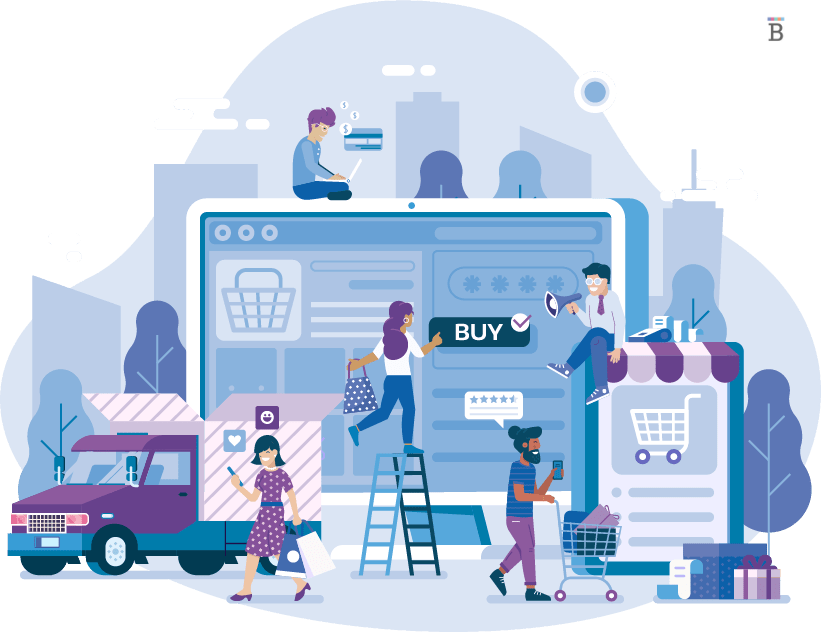In the rapidly evolving world of ecommerce, staying ahead of the curve is crucial for businesses to succeed. As the Founder of BAB Group of Companies Bilal Ahmad Bhat, I’ve witnessed the transformative power of embracing emerging marketing trends. In this comprehensive guide, we will explore the top 10 ecommerce marketing trends for 2024 and provide actionable insights on how businesses can apply them to drive growth, engagement, and profitability.
Optimize for Voice Search:
Voice search continues to gain traction as consumers embrace smart assistants like Alexa, Siri, and Google Assistant. Optimizing your ecommerce website and content for voice search can improve visibility and accessibility for voice-enabled devices.
- Conduct keyword research specifically for voice search queries.
- Optimize product descriptions and metadata for natural language queries.
- Create conversational content that addresses common questions and concerns.
- Implement structured data markup to enhance search engine understanding of your content.
Improve the Mobile Shopping Experience:
With mobile devices driving a significant portion of ecommerce traffic, optimizing the mobile shopping experience is essential for success. Focus on responsive design, fast loading times, intuitive navigation, and seamless checkout processes.
- Adopt a mobile-first approach to website design and development.
- Implement Accelerated Mobile Pages (AMP) for faster loading on mobile devices.
- Optimize images and videos for mobile viewing.
- Simplify the checkout process with guest checkout options and mobile payment solutions.
Personalize Customer Interactions:
Personalization continues to be a cornerstone of effective ecommerce marketing. Leverage customer data and technology to deliver tailored product recommendations, personalized offers, and customized communication.
- Collect and analyze customer data across multiple touchpoints.
- Segment your audience based on demographics, behavior, and preferences.
- Use AI and machine learning algorithms to automate personalized recommendations.
- Implement dynamic content that adapts based on user interactions and interests.
Use Augmented Reality (AR):
Augmented Reality (AR) technology offers immersive shopping experiences that allow customers to visualize products in real-world environments. Incorporate AR features into your ecommerce platform to enhance product discovery and engagement.
- Enable AR product try-ons for items like clothing, accessories, and home furnishings.
- Use AR to showcase product features, dimensions, and functionalities.
- Implement AR-powered virtual showrooms or try-before-you-buy experiences.
- Leverage AR in marketing campaigns to drive excitement and curiosity.
Offer a Subscription Service:
Subscription-based ecommerce models provide a steady stream of recurring revenue while fostering customer loyalty and engagement. Consider offering subscription boxes, memberships, or auto-replenishment options for consumable products.
- Identify products or services suitable for a subscription model.
- Create tiered subscription plans with varying benefits and pricing.
- Offer incentives such as discounts, exclusive content, or early access to new products.
- Use customer feedback and data to improve subscription offerings continuously.
Leverage Chatbots for Customer Service:
Chatbots have become indispensable tools for providing instant support and assistance to ecommerce customers. Implement AI-powered chatbots to handle common inquiries, provide product recommendations, and facilitate seamless transactions.
- Integrate chatbots into your website, mobile app, and messaging platforms.
- Train chatbots to understand natural language queries and provide accurate responses.
- Offer 24/7 chatbot support for immediate assistance.
- Use chatbot analytics to identify trends, improve responses, and optimize user experience.
Adopt the BOPIS (Buy Online, Pick up In-Store) Model:
The BOPIS (Buy Online, Pick up In-Store) model combines the convenience of online shopping with the immediacy of in-store pickup. Implementing BOPIS can attract local customers, reduce delivery costs, and enhance customer satisfaction.
- Enable BOPIS functionality on your ecommerce platform.
- Promote BOPIS options prominently on product pages and checkout.
- Provide clear instructions for pickup locations, hours, and procedures.
- Offer incentives such as discounts or rewards for choosing BOPIS.
Strengthen Security Measures:
As ecommerce transactions increase, prioritizing security is paramount to building trust and credibility with customers. Implement robust security measures to protect customer data, prevent fraud, and ensure secure payment processing.
- Use SSL encryption to secure data transmission and protect sensitive information.
- Implement two-factor authentication (2FA) for account login and transactions.
- Regularly update security protocols and patches to address vulnerabilities.
- Educate customers on best practices for online security and privacy.
Promote Social Commerce:
Social media platforms continue to be influential channels for ecommerce marketing and sales. Leverage social commerce features, such as shoppable posts, live shopping, and social integrations, to reach and convert audiences on social platforms.
- Optimize social media profiles with compelling visuals, product information, and links.
- Create engaging content that encourages social sharing and interaction.
- Use social listening tools to monitor conversations, trends, and customer feedback.
- Collaborate with influencers and brand advocates to amplify your social commerce efforts.
Deliver Multichannel Customer Experiences:
In today’s omnichannel landscape, customers expect seamless experiences across multiple touchpoints. Adopt a multichannel strategy that integrates online and offline channels to provide cohesive and personalized customer journeys.
- Leverage data integration to unify customer profiles and interactions across channels.
- Implement cross-channel marketing campaigns that resonate with target audiences.
- Offer omnichannel fulfillment options, such as ship-to-store or in-store returns for online purchases.
- Use analytics and attribution models to measure the impact of multichannel efforts and optimize performance.
Conclusion:
The ecommerce landscape is evolving rapidly, driven by technological advancements, changing consumer behaviors, and competitive pressures. By embracing these top 10 ecommerce marketing trends for 2024 and implementing actionable strategies, businesses can position themselves for success, drive engagement, and capitalize on growth opportunities in the digital marketplace.

